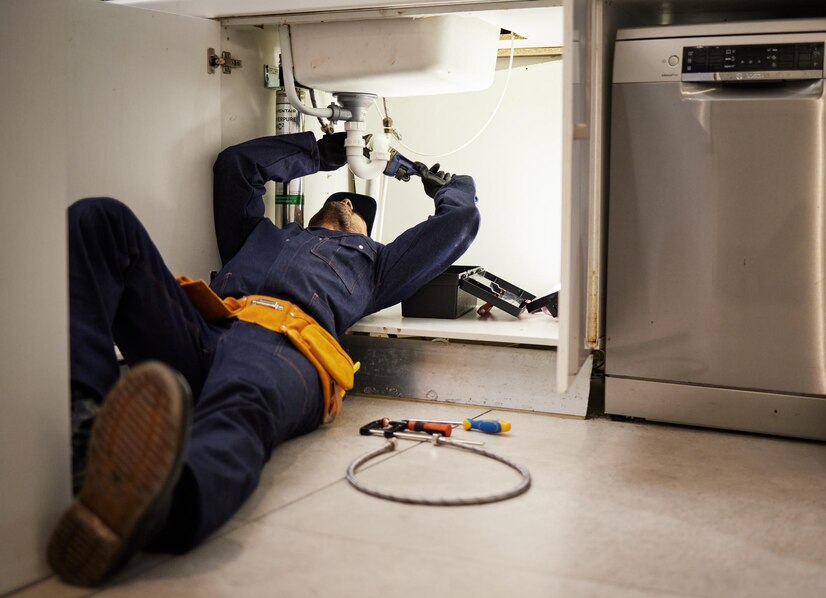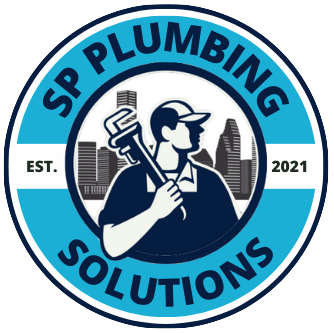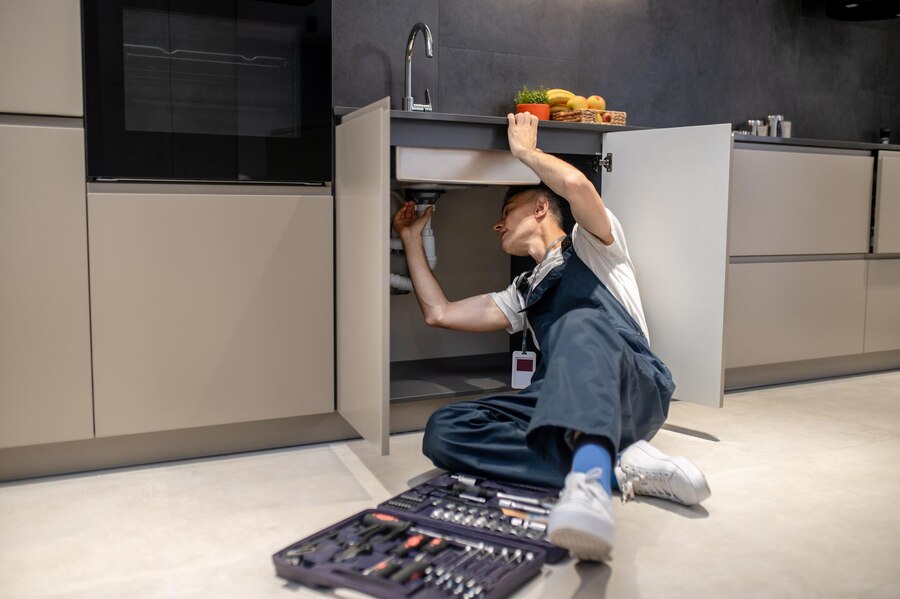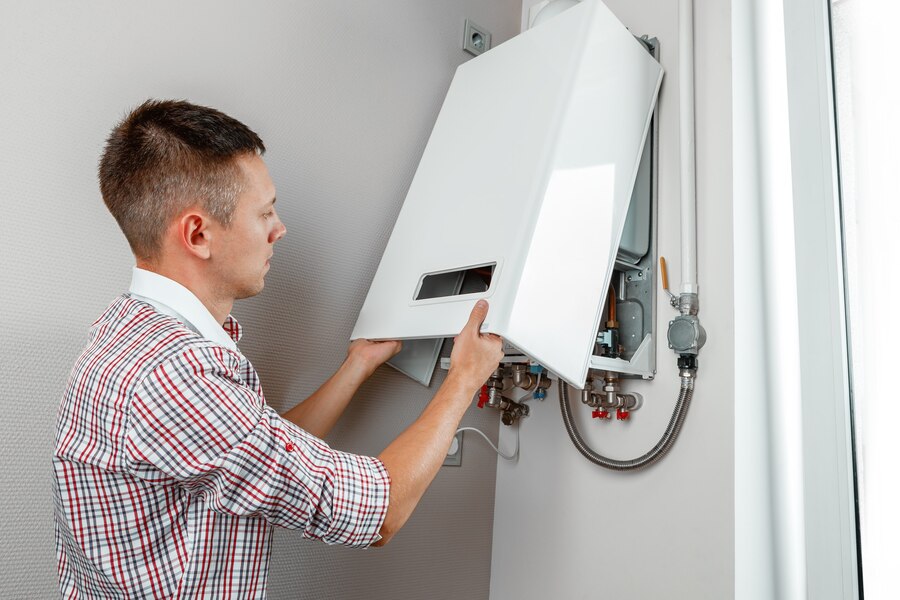
In the intricate network of infrastructure that keeps our homes and cities functioning smoothly, few things are as critical as the pipes and sewers hidden beneath our feet. Yet, these essential components are often overlooked until a problem arises. Whether it’s a minor leak or a major burst, knowing the most efficient repair techniques can save both time and money while minimizing disruption to daily life.
In this comprehensive guide, we delve into the top 6 techniques for tackling pipe and sewer repairs with efficiency and effectiveness. From innovative technologies to time-tested methods, we’ll explore the strategies that professionals rely on to restore functionality to damaged pipelines. Whether you’re a homeowner, a business owner, or a maintenance professional, mastering these techniques can make all the difference in maintaining a reliable plumbing system.
Inspection Methods
- Visual inspections: Visual inspections involve physically examining pipes and sewer lines for signs of damage, corrosion, leaks, or blockages. This method allows inspectors to identify visible issues such as cracks, breaks, or deformities in the pipes. Technicians can use specialized tools such as flashlights, mirrors, and borescopes to inspect pipes visually. Visual inspections are typically the first step in assessing the condition of pipelines and can provide valuable insights into the overall health of the system.
- CCTV inspections: CCTV (Closed-Circuit Television) inspections utilize remote-controlled cameras attached to flexible cables to inspect the interior of pipes and sewer lines. These cameras can navigate through the entire length of the pipeline, capturing high-definition video footage in real-time. CCTV inspections allow inspectors to identify problems such as cracks, leaks, root intrusion, and blockages without the need for extensive excavation. The recorded footage can be reviewed later for detailed analysis and documentation, aiding in accurate diagnosis and repair planning.
- Pressure testing: Pressure testing involves pressurizing pipes and sewer lines to detect leaks or weaknesses in the system. This method is particularly useful for identifying hidden leaks or assessing the integrity of newly installed pipelines. Pressure testing can be performed using water or air, depending on the specific requirements of the system. By monitoring pressure levels over a designated period, technicians can identify any fluctuations or drops indicative of leaks or structural issues. Pressure testing helps ensure the reliability and safety of pipelines, especially in critical applications where leaks could lead to significant damage or environmental hazards.
Leak Detection Techniques
- Acoustic leak detection: Acoustic leak detection utilizes specialized equipment to listen for the sound of escaping water or gas within pipes. By analyzing the frequency and intensity of the sound waves emitted by leaks, technicians can pinpoint the location of leaks with high accuracy. This non-invasive technique is particularly effective for detecting underground leaks or leaks hidden behind walls without the need for excavation. Acoustic leak detection can help prevent water loss, property damage, and costly repairs by identifying leaks early before they escalate into major issues.
- Thermal imaging: Thermal imaging, also known as infrared thermography, uses thermal cameras to detect temperature variations along the surface of pipes. Leaks or defects in pipelines often cause localized temperature changes due to the flow of fluids or gases. By capturing infrared images of the pipeline system, technicians can identify anomalies indicative of leaks or structural weaknesses. Thermal imaging can be performed quickly and efficiently, allowing for proactive leak detection and preventive maintenance. This non-destructive technique is particularly useful for inspecting large or inaccessible areas where visual inspection may be challenging.
- Dye testing: Dye testing, also referred to as dye tracing or dye injection, involves introducing a colored dye or fluorescent tracer into the pipeline system to trace the path of water flow and detect leaks. The dye is injected into the plumbing system or applied directly to suspected leak areas, and its movement is monitored to identify the source of leaks. Dye testing is commonly used in plumbing systems, sewer lines, and septic tanks to locate leaks, infiltration points, or cross-connections. This simple yet effective technique can help pinpoint hidden leaks and assess the integrity of the pipeline system, facilitating timely repairs and maintenance efforts.
Pipe Relining
- Cured-in-place pipe (CIPP) lining: Cured-in-place pipe (CIPP) lining is a trenchless pipe rehabilitation method that involves inserting a flexible liner coated with resin into the existing damaged pipe. The liner is then inflated and cured in place using heat or ultraviolet light, creating a seamless, durable inner layer within the pipe. CIPP lining effectively restores the structural integrity of deteriorating pipes, seals cracks and leaks, and prevents further corrosion. This cost-effective and minimally invasive technique is suitable for various pipe materials and diameters, making it ideal for repairing both residential and municipal sewer lines.
- Pipe bursting: Pipe bursting is a trenchless pipe replacement method used to replace old or damaged pipes without the need for extensive excavation. The process involves pulling a new pipe through the existing damaged pipe, simultaneously fracturing the old pipe and displacing it into the surrounding soil. Pipe bursting is particularly effective for replacing brittle, corroded, or collapsed pipes, and it can accommodate larger pipe diameters and longer replacement lengths compared to other trenchless methods. This efficient technique minimizes disruption to the surrounding environment, reduces labor and material costs, and ensures a durable, long-lasting solution for pipe replacement projects.
- Slip lining: Slip lining is a trenchless rehabilitation method that involves inserting a smaller diameter pipe, known as a liner, into the existing damaged pipe. The liner is typically made of materials such as high-density polyethylene (HDPE) or fiberglass-reinforced plastic (FRP) and is pushed or pulled through the host pipe using specialized equipment. Once in place, the liner effectively creates a new, corrosion-resistant pipe within the existing pipeline, restoring structural integrity and hydraulic capacity. Slip lining is commonly used for rehabilitating deteriorating sewer lines, stormwater drains, and culverts, offering a cost-effective and durable solution for pipe repair and rehabilitation projects.
Excavation Alternatives
- Directional drilling: Directional drilling, also known as horizontal directional drilling (HDD) or trenchless drilling, is a method used to install underground pipes, conduits, and cables without the need for traditional open trench excavation. This technique involves drilling a borehole underground and then horizontally steering a drill bit along a predetermined path to create a pathway for the installation of the utility line. Directional drilling is highly versatile and can navigate beneath obstacles such as roads, rivers, and buildings, minimizing surface disruption and environmental impact. This efficient and precise method is widely used in urban areas, environmentally sensitive areas, and locations with limited access for traditional excavation equipment.
- Trenchless sewer repair: Trenchless sewer repair encompasses a range of techniques and technologies designed to rehabilitate or replace underground sewer pipes without the need for extensive excavation. These methods include pipe bursting, pipe lining, and cured-in-place pipe (CIPP) lining, among others. Trenchless sewer repair offers numerous advantages over traditional dig-and-replace methods, including reduced disruption to property, shorter project timelines, and lower overall costs. By utilizing innovative equipment and materials, trenchless sewer repair allows for efficient and durable solutions to address a wide range of sewer pipe problems, from leaks and cracks to root intrusion and corrosion.
Patching and Sealing Methods
- Epoxy pipe lining: Epoxy pipe lining is a popular method for repairing small leaks, cracks, and pinholes in pipes without the need for extensive excavation. It involves coating the interior surface of the damaged pipe with an epoxy resin that forms a seamless, durable barrier against leaks and corrosion. The epoxy lining adheres tightly to the pipe’s surface, effectively sealing off leaks and strengthening weakened areas. This versatile solution can be applied to various pipe materials, including metal, plastic, and concrete, and is suitable for both residential and commercial plumbing systems. Epoxy pipe lining is a cost-effective and long-lasting option for restoring the integrity of aging or deteriorating pipes, prolonging their lifespan and preventing costly water damage.
- Pipe clamping: Pipe clamping, also known as band clamping or pipe repair clamping, is a quick and temporary solution for repairing leaking pipes in emergency situations. It involves placing a specially designed clamp or sleeve over the damaged section of the pipe and tightening it securely to create a temporary seal. Pipe clamps are available in various sizes and materials to accommodate different pipe diameters and types, such as metal, plastic, or rubber. While pipe clamping provides an immediate fix for leaks, it is typically considered a temporary measure until more permanent repairs can be made. However, when applied correctly, pipe clamps can effectively contain leaks and prevent water damage until a professional plumber can assess the situation and implement a permanent solution.
- Chemical sealants: Chemical sealants, such as epoxy putty or pipe repair wraps, offer a convenient and effective solution for sealing small leaks and cracks in pipes. These sealants come in the form of two-part epoxy compounds or self-adhesive wraps that can be applied directly to the damaged area of the pipe. Once applied, the chemical sealant hardens and forms a strong, waterproof seal that prevents further leakage. Chemical sealants are suitable for a wide range of pipe materials and can withstand high pressures and temperatures, making them ideal for both plumbing and industrial applications. While chemical sealants provide a quick and easy fix for minor pipe damage, they may not be suitable for larger or more extensive repairs. It’s essential to follow manufacturer instructions carefully when using chemical sealants and to consult a professional plumber for more significant pipe issues.
Mastering efficient pipe and sewer repair techniques is crucial for maintaining the integrity and functionality of your plumbing system. From innovative relining methods to proactive maintenance strategies, these top 6 techniques empower you to address issues swiftly and effectively, minimizing disruptions and costs in the long run.
At SP Plumbing Solutions, we understand the importance of reliable plumbing services. Whether you’re embarking on a new construction project or need assistance with repairs, our team is here to help. Call us today at 281-727-6798 to experience top-notch plumbing solutions tailored to your needs. We’ll treat you right, every step of the way.


